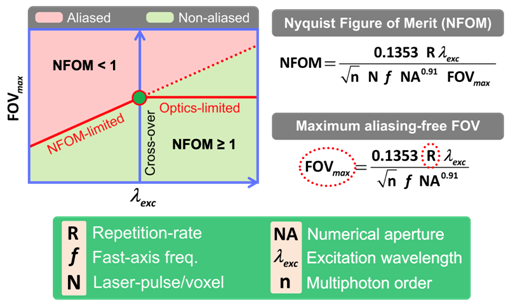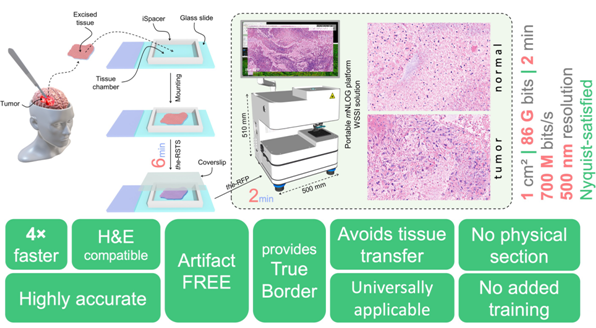 |
|
 |
| |
发行人:黄建璋所长 编辑委员:曾雪峰教授 主编:林筱文 发行日期:2022.07.30 |
| |
|
 |
|

本所林清富教授荣获PARC Appreciation Award,特此恭贺!
帕罗奥多研究中心公司(Palo Alto Research Center, Inc.; PARC),前身为全录帕罗奥多研究中心(Xerox PARC),是美国的一个科技研发机构,成立于1970年,坐落于加州的帕罗奥多,曾是全录公司最重要的研究机构。在2002年1月4日起成为独立子公司(https://www.parc.com/)。
|
|
 |
|
 |
|
| |
|
 |
Speckle noise removal using a two-step weighted robust regression
Professor Jui-che Tsai
Graduate Institute of Photonics and
Optoelectronics, National Taiwan University
台湾大学光电所 蔡睿哲教授
The speckle usually degrades the signal quality for coherent detection or imaging. In this study, under the single-image constraint, we propose a two-step weighted robust regression method for speckle removal, where the first step is to smooth the speckle-noisy image by means of block matching and 3D filtering (BM3D), and the second step is further to apply a weighted robust regression to discriminate between the signal and residual speckle and to recover the edge information. Theoretical demonstration is presented, and experimental results with laser illumination are shown and compared to other competing methods. The experiments show that our method has robustness and prominent improvement of 12~19% in the speckle removal task.
|

|
|
(a) The experimental setup to capture the speckle-noisy images. (b) The flowchart of our two-step weighted regression method. (c) The intermediate images at each step of the flowchart in (b) |
© Elsevier B.V.
H. H. Chen and J. C. Tsai, “Speckle noise removal using a two-step weighted robust regression,”
Optics Communications,
Vol. 452, pp. 510–514, Dec. 2019.
Investigating the contact and high field transport properties of Janus WSSe and MoSSe Materials
Professor Yuh-Renn Wu ’s Laboratory
Graduate Institute of Photonics and
Optoelectronics, National Taiwan University
台湾大学光电所 吴育任教授
Janus transition metal dichalcogenides TMD with out-of-plane structural asymmetry have attracted increasing attention due to their exceptional potential in electronic and optical applications. Unlike most 2D materials, which has symmetric structure, the Janus TMD has structure asymmetry, which will induce dipole charges in the out-of-plane direction. Hence, in the multi-layer structures, it will behave like piezoelectric material but without surface defects. This enables many device concepts to be implemented with this unique property. For example, the oxide/Janes TMD material interface will induce 2DEG or 2DHG depending on its’ polarity. This will overcome the doping issues in 2D materials, where we don’t need modulation doping to induce n or p channels. A similar comparable device is like AlGaN/GaN HEMT, which is widely used in high-power and high-frequency devices where doping is not needed. The different orientations of multi-layer design also enable multi-function devices. In this study, we systematically investigated the electron-phonon interactions and related transport properties in monolayer Janus MoSSe and WSSe using density-functional formalism. The electrical potential and contact properties were investigated. Our studies show the potential bending at heterojunction interface, which might be used for polar-structure engineering. Furthermore, the electron-phonon scattering rates were obtained using Fermi’s golden rule and extended to the extraction of the effective deformation potential constants for further Monte Carlo treatment. From the results of the Monte Carlo analysis, we found that WSSe provides better performance with higher low-field mobility, while MoSSe shows higher peak velocity at higher fields. In our results, both MoSSe and WSSe seem to be competitive with other previously studied 2D materials. However, with the asymmetric induced piezoelectric effect, it is possible to implement more ideas in device designs. This work provides a systematic perspective on the potential of Janus WSSe and MoSSe for electronic applications.
Partial contents of this report is published in
J. Appl. Phys.
131, 144303 (2022); https://doi.org/10.1063/5.0088593
|
 |
| |
|
|
|
 |
|
| |
|
 |
论文题目:Development of a Nyquist-exceeding subminute gigapixel Nonlinear Optical Mesoscope to assist with rapid histopathology of a human brain tissue(开发超越尼奎斯速率的亚分钟十亿像素介观显微镜以实现人脑组织的快速细胞病理学诊断)
姓名:Bhaskar Jyoti Borah(巴卡地)
指导教授:孙启光教授
| 摘要 |
|
Intraoperative margin assessment (IMA) is critical in surgical pathology, especially related to vital organs, such as the human brain, which is a crucial part of the central nervous system. Frozen section (FS) is the global standard for IMA, which involves cryosectioning, susceptible to artifacts, consumes up-to 30 minutes per round, and eventually limits the number of IMAs in a critical surgery, which often leads to recurrence of a malignant tumor owing to leftover positive margins. Therefore, a reliable high-speed IMA is always a clear necessity in different levels of surgical pathology applications.
In the paradigm of modern
digital IMA, for a fresh unsectioned tissue, it is often expected to collect ample amounts of information during the IMA itself. The purpose is to digitally secure decent diagnostic reliability so that the specimen does not require to be fixed or deep-frozen and physically preserved for a subsequent re-assessment. Several optical imaging modalities attempted to provide a rapid assessment with optical virtual sectioning of a specimen. Nevertheless, such prior digital IMA-potential studies often might not meet the prevailing state-of-the-art whole-slide-imaging (WSI) standard in the context of either a Nyquist-satisfied centimeter-scale gigapixel-sampled half-a-micron digital resolution, and/or a real-time artifact-free stitching/mosaicking feature, and/or a subminute gigapixel acquisition and digital display ability with an uncompromised resolution across the “specimen to digital display” pixel pathway.
Aside from speed and resolution concerns, the prior FS-alternative IMA approaches often encountered an accuracy/reliability concern. It is noted that pathologists across the globe are trained and adapted to the standard hematoxylin & eosin (H&E)-specific histological features. While adapting to H&E-alternative dyes, especially a source of nuclei contrast other than the gold standard, it is obvious that the results/images produced would not be readily assessed by a pathologist. That eventually needs dedicated deep learning and/or additional interpretation training for a pathologist, while establishing the same degree of accuracy and reliability as the gold standard remains another concern, not to mention repeated organ-specific and/or even hospital-specific training might be required for different surgical pathology applications.
In this research, we introduce an FS-alternative digital IMA-capable technique called Training-Free True-H&E Rapid Fresh
digital-Pathology (the-RFP) that provides 4× faster assessment compared to FS-biopsy, yet holds an excellent reliability comparable to a formalin-fixed paraffin-embedded (FFPE) biopsy. With H&E compatibility,
the-RFP requires no additional interpretation training for a pathologist. Unlike an FS-biopsy,
the-RFP is free from tissue-freezing and physical sectioning, and thus does not encounter typical frozen-section artifacts.
The-RFP is assisted by a mesoscale Nonlinear Optical Gigascope (mNLOG), which provides a truly WSI-competing whole specimen superficial imaging (WSSI) digital IMA-potential solution with an ability of multichannel imaging of a 1 cm2 area in <120 seconds with 86 G bits or 3.6 Gigapixels of data, yielding a sustained effective throughput of >700 M bits/s, preserving a submicron digital resolution with no post-acquisition image processing.
mNLOG platform is streamlined to a rapid artifact-compensated 2D large-field mosaic-stitching (rac2D-LMS) approach yielding a mosaic-stitching ability of >12×12 mm2 area with 130 G bits of data in 60 seconds.
In this study, the-RFP is applied to investigate human brain tumors, being one of the fatal cancers across the globe. Despite unprecedented revolutions in medical sciences and technologies, the 5-year survival for glioblastoma cases only improved from 4% to 7% within the period 1975-1977 to 2009-2015, revealing its extreme seriousness. A fast and reliable IMA is thus critical to effectively resect such a fatal tumor while not much injuring eloquent regions to help circumvent postoperative neurological complications. A non-interventional clinical trial is conducted in collaboration with the Division of Neurosurgery, Department of Surgery, and Department of Pathology of National Taiwan University Hospital to investigate the accuracy and reliability of
the-RFP technique. With no additional interpretation training provided to our collaborating pathologists, blind tests reveal an excellent accuracy of 100% considering a total of 50 normal and tumor-specific human brain specimens, where
the-RFP-based decisions matched the respective FFPE-pathology outcomes.
|
 |
|
Figure 1. Nyquist figure-of-merit (NFOM) |
|
 |
|
Figure
2. Rapid Fresh
digital-Pathology
(RFP) |
|
|
 |
|
 |
|
| |
|
 |
— 资料提供:影像显示科技知识平台 (DTKP, Display Technology
Knowledge Platform) —
—
整理:林晃岩教授、吴思洁 —
编织光
量子力学的自旋统计定理(spin-statistics theorem)规定基本粒子必须是玻色子(boson)或费米子(fermion),分别具有整数或半整数值的自旋。在考虑多个可互换粒子的波函数物理学时,玻色子和费米子的表现非常不同。光子作为自旋1粒子,是具有对称多粒子波函数的玻色子(两个粒子交换后相移为零),从而产生光子束、玻色子采样(boson sampling)和玻色-爱因斯坦凝聚(Bose–Einstein condensation)等现象。另一方面,电子是自旋1/2费米子,具有非对称多粒子波函数(两个粒子交换后的相移为π),直接导致包立不兼容(Pauli exclusion)原理。
然而,这种严格的相位条件不再适用于仅限于在两个空间维度中移动的准粒子[1]。 典型的例子是螺线管磁通量线—就像一缕头发—附着在被限制在平面上移动的电子上。根据附加的磁通量,累积相位可以取任意值,这导致Frank Wilczek创造了术语 任意子(anyon)[2]。此外,该相位角取决于准粒子是顺时针还是逆时针方向互换,这种区别仅在两个空间维度上才有意义。
交换两个粒子的世界线的数学运算在纽结理论(knot theory)中称为编织。对于几对粒子的连续应用留下了一个独特的模式—一个辫子(plait)—它编码了成对交换的历史。这类似于头发或织物的编织,其中移动和扭曲的顺序会产生独特的图案(图1)。数学中的编织是一个纯粹的拓扑概念,在理论粒子物理学中有惊人的应用。特别是,它只关心交换或移动的顺序,而不考虑它们的精确实现。数学中的纽结理论感兴趣的是确定两个结或辫子是否彼此等价,即它们是否可以连续地从一个转换到另一个。已经提出了几个拓扑结不变量,最著名的是琼斯多项式。然而,计算琼斯多项式在计算上是困难的,并且有人建议量子计算将提供显著的计算加速。
|

|
|
图1、使用光和光波导的非阿贝尔编织原理。一系列紧密间隔的波导以这种方式小心地绞合在一起,以实现与不同位置的不同波导的倏逝耦合(evanescent coupling)。在这种排列中光子的绝热演化模拟了非阿贝尔任意子的统计数据,因此形成了拓扑量子计算的基石。(我们感谢 V. Neef 对图的概念设计。) |
最初是在分数量子霍尔效应(quantum Hall effect)[3]的背景下进行研究的,其部分分数统计数据可以串联,此后任意子已进入量子计算的领域[4],其中它们的拓扑起源本质上可以保护它们免受某些计算错误的影响[5]。这也是非阿贝尔任意子(non-Abelian anyon)概念出现的地方。如果透过交换两个任意子得到的累积相位是一个纯量(即一个简单的数字Θ),那么这种类型的后续操作是可交换的。这与阿哈罗诺夫-玻姆效应(Aharonov– Bohm effect)没有什么不同,在该效应中,带电粒子的波函数在环绕螺线管磁通线时获得相位。然而,如果存在一个可以发生演化的能量简并子空间,则获得的相位可以是矩阵值的,并且后续操作可能不再可交换。这相当于在曲面,像是地球表面上封闭轮廓上并行传输向量,将向量旋转一个由封闭表面积决定的角度。将向量并行传输前后的线性映像可以用旋转矩阵来表示。正是这些矩阵值运算构成了拓扑量子计算器的基础。拓扑保护带来的强健性使得拓扑量子计算的想法非常有吸引力。
在实验上,已经在最初提出物理学的凝态系统中寻求证明任意子的存在及其编织统计数据[6,7]。现在,Zhang等人在Nature Photonics上发表文章,选择了用光来追求一条截然不同的路线[8]。基于积体波导结构,在近轴近似下可以模拟离散量子粒子在(2+1)维中的演化,其中光的传播方向可以作为时间坐标,两横向作为两个空间坐标。换句话说,将其中一个维度指定为时间,剩下的就是两个空间维度,不用像固态实现那样进一步进行维度限制。事实上,这样的结构代表了粒子的世界线。
使用激光写入方法制造光波导可以实现复杂的三维电路几何形状,每个波导都遵循自己的特定轨迹。通过明智地选择相邻波导之间的间距,以及它们之间的站点间跳跃,他们能够在其简并子空间内构建光子的绝热演化,并决定相关的矩阵值几何相位[9,10]。然后透过连接两个以不同序(order)对相邻光子成对作用的编织词来显示该相位的非阿贝尔性质。如果交换个别运算,两个串联操作的结果将是相同的。然而,矩阵值几何相位的非阿贝尔性质意味着它们的干涉测量产生了复杂的结果。
重要的是,作者还展示了如何利用他们的方案来实现多模非阿贝尔编织。为此,他们使用了一种配置,重复双模编织的结构作为基本构建。在使用古典激光以及波长约为810 nm的单光子的概念验证实验中,他们展示了五种模态的非阿贝尔编织。由于在这种结构的每个构建区块中只有一个波导遵循弯曲的轨迹,因此顶部和底部的直波导都是相同的。因此,在未来的应用中,这些可以被预制,并且只有每个中央(即每四个)波导可以基于电路的所需功能来实现。
Zhang等人展示了积体光子波导如何透过使用简并子空间中光子的绝热演化来模拟非阿贝尔任意子的统计数据,作为拓扑量子计算的潜在可扩展平台。更有趣的是,这里没有涉及到“真正的”准粒子,相反的,光子的演化可以被扭曲成任意子的演化。
尽管这些最新发现只是实现光子拓扑量子计算的第一步,但Zhang和同事[8]提供了一个原理证明演示所有必要的成分—非阿贝尔几何相位、类任意子统计和级联运算—可以使用积体光子波导成功实现。现在,积体量子光子学成为拓扑量子计算的可行平台的大门已经敞开。
|
参考资料: |
Stefan Scheel, Alexander Szameit, “A braid for light,”
Nature Photonics volume
16, pages 344-345 (2022)
https://doi.org/10.1038/s41566-022-00993-1
DOI: 10.1038/s41566-022-00993-1
|
|
参考文献: |
[1] Leinaas, J. M. & Myrheim, J.
Il Nuovo Cimento B 37,
1–23 (1977)
[2] Wilczek, F.
Phys. Rev. Lett. 49,
957 (1982)
[3]
Halperin, B. I. Phys. Rev. Lett.
52, 1583 (1984)
[4] Freedman, M. H., Kitaev, A., Larsen, M. J. & Wang, Z.
Bull. Amer. Math. Soc. 40,
31–38 (2003)
[5] Nayak, C., Simon, S. H., Stern, A., Freedman, M. H. & Das Sarma, S.
Rev. Mod. Phys. 80,
1083 (2008)
[6] Nakamura, J., Liang, S., Gardner, G. C. & Manfra, M. J.
Nat. Phys. 16,
931–936 (2020)
[7] Bartolomei, H. et al. Science
368, 173 (2020)
[8] Zhang, X.-L. et al. Nat. Photon. https://doi.org/10.1038/s41566-
022-00976-2 (2022)
[9] Yang, Y. et al. Science
365, 1021–1025 (2019)
[10] Kremer, M., Teuber, L., Szameit, A. & Scheel,
S. Phys. Rev. Res. 1,
033117 (2019) |
|
|
|
|
|
 |
|
|
|
|
|
|
|
|
|
|
|
 |
|
|
|
 |
|
 |
|